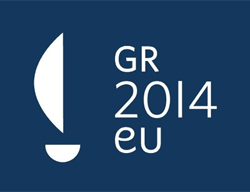Budget
The legal basis of the Budget policy are Articles 268 to 280 of the Treaty establishing the European Community.
The biggest slice of the budget goes to ensure we have secure supplies of safe food and preserve the EU’s farming and rural heritage. Of the total budget of €116.5bn in 2005, agriculture will take €42.8bn. A further €6.3bn will be spent on rural development.
The policies which take the bulk of the remaining money are regional and social policy, research and innovation, aid for the Union's less economically developed neighbours and the world's poor.
Boosting economic development
The EU’s structural funds (including the Regional Development Fund and the Social Fund) represent the second largest budget item, taking almost 30% of the budget in 2005. This money primarily supports economic development in the poorest regions of the EU or meets particular social needs. Some of the money goes on large infrastructure projects, such as roads, bridges, motorways, airports and improvements in electronic communications. However, many other types of project qualify for assistance, from small businesses to decaying city centres, from wind farms to schemes to help the disabled be an integral part of the community.
Administration Spending
Only a small share of the budget is used to pay the administrative costs of running the EU. Including the cost of running all the institutions (which include the European Commission, the European Parliament and the Council of Ministers) and translators and interpreters to deal with the 20 languages of the enlarged EU, this comes to well under 6% of total expenditure.
Helping the Third World
The remaining EU money is spread across a wide range of policies, of which external relations is the largest. The EU funds economic development in many countries around the world, but it pays particular attention to the needs of its immediate neighbours around the Mediterranean, in eastern Europe – particularly candidate countries for EU membership – and the Balkans. In addition, some €500 million is spent on average every year on humanitarian aid. This includes emergency assistance to relieve famine or provide help after earthquakes.
A totally separate budget administered by the European Commission funds assistance for the countries of Africa, the Caribbean and the Pacific linked to the EU by the Cotonou Agreement on trade, technical assistance and financial aid. This is additional money provided by the member states specifically for this purpose and paid into the European Development Fund (EDF). The EDF will spend €4 billion in 2005.
Fostering pan-European research and education
Another significant budget item is spending on research and innovation. This will take more than €4 billion in 2005. The money helps promote integrated pan-European research projects which pool the efforts of scientists working in different EU countries. The EU budget also pays for educational programmes. Total expenditure on cross-border education programmes and projects to protect and promote Europe’s cultural diversity will be more than €0.9 billion in 2005.
Paying for Europe
Where does the budget money come from? It is a mix of the EU’s “own resources” and a direct contribution by member states. “Own resources” are revenues from levies on agricultural imports, customs duties on other imports and a slice of value-added tax income. They account for one quarter of the budget. The member state collecting the money acts only as a service provider for a common EU policy (and gets to keep a share of the money as payment for acting as the collection agent).
The fourth resource was introduced in 1988 to deal with two simultaneous developments: an expansion in the responsibilities of the EU and a reduction in revenues from duties and levies as the result of freer international trade. Member states contribute a percentage of gross national income. As this is a measure of national wealth, the formula ensures that each country contributes according to its means. The money is then spent where it is needed most. The sum total of the EU budget is less than 2.5% of what EU governments spend each year.






 Svejo
Svejo Twitter
Twitter Link4e
Link4e Pipe
Pipe Web-bg
Web-bg Bghot
Bghot Lubimi
Lubimi Novinitednes
Novinitednes Ping
Ping Facebook
Facebook Myspace
Myspace Mix
Mix Del.ico.us
Del.ico.us Reddit
Reddit Digg
Digg Stumbleupon
Stumbleupon Myweb Yahoo
Myweb Yahoo Google Bookmarks
Google Bookmarks Google Buzz
Google Buzz

